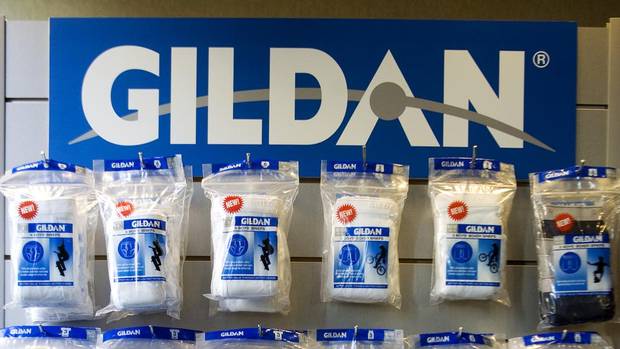by Franklin Templeton Investments blog, Franklin Templeton Investments
The Digest
Last week was turbulent for global equity markets as aggressive moves in bond markets unsettled investors and equity markets traded sharply lower into the end of the month. The week ended with the MSCI World Index down 2.8%, the S&P 500 Index down 2.4%, the STOXX Europe 600 Index down 2.4%, and the MSCI Asia Pacific Index down 5.3%.1
Bond Market Selloff Spooks Equity Markets
Last week saw dramatic moves in the US bond market, the velocity of which spooked equity markets and prompted some aggressive rotation out of growth names and into value names. The US 10-year Treasury yield finished up seven basis points2 on the week to 1.407%, though it had jumped to 1.6% on Thursday, and the two-year/10-year spread is back to levels not seen since 2018.
There were several dynamics at play here, but central to this has been increasing hope of economies reopening (vaccinations progressing, new cases and hospitalisation rates heading in the right direction, amongst other things) and fresh US stimulus. The thinking is that we could see a surge in strong consumer demand for products or services, bringing sudden inflationary pressures and leading to questions over what this would mean for central bank policy. With economies potentially ‘overheating’ in that scenario, the fear is it could signal an end to the ultra-easy monetary central bank policy we currently enjoy, as central banks try to restrain surging inflation.
In this context, market expectations of the US Federal Reserve (Fed) tightening have increased. Expectations are that the Fed will need to raise rates in early 2023. Two weeks ago, expectations were for tightening in the second half of 2023, and three weeks ago observers thought it would occur in early 2024. The expectation of early interest-rate hikes is making shorter-term bonds especially sensitive to rate risk. In that context, many bond investors will sell those shorter-duration bonds.
This theme has been a talking point for some time and there were hopes that Fed Chair Jerome Powell’s Congressional testimony last week would settle nerves. His rhetoric remained dovish, but offered little new in terms of the Fed’s thinking. With sentiment already brittle, markets reacted aggressively to a seven-year US Treasury auction on Thursday, which saw record-low demand. This spooked markets and saw the US Treasury yield hit 1.6%. The velocity of this move was particularly unsettling for investors, and the Chicago Board Options Exchange’s CBOE Volatility Index (VIX)3 rallied as much as 35% between the European and US market close on Thursday.
What Does This Mean for Equities?
There is a clear ‘push and pull’ in markets at the moment between better-than-expected macro reports, unprecedented levels of stimulus, and a potential end to COVID-19 lockdowns vs. stretched valuations and concerns of the impact of interest-rate increases.
Equity indices moved lower on the week, but key to note was the rotation in markets. In the United States, value outperformed growth by about 3.3% and in Europe there was notable outperformance for value, up 4.4%, vs momentum stocks, which were down 5.1%.
Some say the TINA4 argument for holding equities for the yield has been threatened as bond yields move higher. Income investors that were forced into equities for yield may be more likely to move back to traditional fixed income assets; history suggests 1.75% on the 10-year appears to be the tipping point at which many asset allocators begin to shift back into bonds. If rates rise further from here, there will be weakness in ‘bond proxy’ stocks held for their dividend yield.
We expect ‘reopening’ beneficiaries (value, cyclicals) vs. growth/COVID-19 beneficiaries/bond proxies rotation to be a key theme for equities that will ebb and flow in coming months.
European Yields: European Central Bank (ECB) Attempts to Stem Bond Sell-Off
Despite attempts from central banks to calm the recent rise in bond yields, we have seen continued moves higher. The global bond market has had its worst start to a year since 2015 amid elevated inflation expectations and hopes for a stronger economic rebound. The Fed, European Central Bank (ECB), and Bank of England (BoE) all tried to dampen expectations, but the inflation trade was firmly back on earlier this week. European government bond yields rose to their highest levels in nearly six months this week, with the German 10-year yield hitting levels last seen last March.
Last Thursday, ECB Chief Economist Philip Lane echoed comments from ECB President Christine Lagarde earlier in the week that the central bank is ‘closely monitoring’ longer-term yields, adding that its asset purchases will aim to ‘preserve favourable financing conditions’. The implication is that the ECB may increase its pace of asset purchases under the pandemic emergency purchase programme (PEPP) if financing conditions tighten too much too soon and threaten the economic rebound.
ECB Board Member Isabel Schnabel was specifically quoted as saying that the ECB may need to add support if yields hurt growth. The commentary was briefly supportive last Thursday, but investors have largely ignored the attempt to calm things so far.
Whilst the recent moves are extreme and have garnered a few dramatic headlines, we must also remember that we are talking about moving from ultra-low European yields to still low-levels and that the central banks remain ready to step in.
Week in Review
United States
It was a wild ride for US markets last week, with the S&P 500 Index closing the week down 2.4%. The focus was on the recent surge in bond yields, which drove some sizeable moves in equity markets. As a result, the VIX closed the week up 27%. Increased fiscal stimulus, the Fed’s willingness to let the recovery run hot and improving COVID-19 trends and vaccine distribution have also been supportive of the pro-cyclical rotation in equities. Energy was the only sector to finish in the green last week, up a notable 4.3% as oil prices rallied. All other sectors finished in the red with utilities, consumer discretionary and technology the notable laggards. Also, notably, the NYFANG Index closed the week down 6.3%.
Behind the sector performance, the reflation rotation was evident with crowded growth positioning being adjusted following sharp moves in rates. One of the big reasons for higher growth forecasts in the United States has been President Joe Biden’s stimulus package. However, the Senate ruled on Thursday that one of the key components of the plan, which is an increase in the minimum wage to US$15, could not be included in the bill if it’s going to be passed via the reconciliation process that only needs a simple majority. So, either the bill would need to be passed with 60 votes (this will require Republicans to be on board), or the minimum-wage hike would need to be taken out. In response, Senator Bernie Sanders, who chairs the Senate Budget Committee, said that he would seek to make it a more fiscal measure so that it could still be included in the bill, saying that he would remove tax deductions ‘from large, profitable corporations’ who don’t pay their workers as much, and incentivize small businesses to raise wages.
In terms of COVID-19, the picture continues to improve overall. However, the recent fall in new cases showed signs of stalling last week. The seven-day average hovers just under 70,000 infections per day. Nonetheless, the rate of hospitalisations continues to improve, with the number hospitalised with the disease on Saturday and Sunday below 50,000 per day for the first time since 2 November.
The United States continues to ramp up vaccinations, now at a seven-day average of 1.74 million per day, now firmly ahead of the 1.5 million doses per day President Biden had promised to administer.
Europe
Volatility returned to European equity markets last week, driven by those sizeable shifts in global bond yields. Headline indices were mixed, with divergent sector performance through the week. We are witnessing a clear push-and-pull in markets at the moment between better-than-expected macro reports, unprecedented levels of stimulus and a potential end to COVID-19 lockdowns vs. stretched valuations and concerns of the impact of interest-rate increases. This was amplified as the week went on.
In terms of index moves, the broader STOXX Europe 600 Index actually underperformed due to its hefty health care weighting, down 2.4%. The Spanish IBEX 35 Index outperformed, up 0.7%, with travel and leisure and the banks better off as investors bought value. The UK FTSE100 Index was dragged lower, down 2.1% last week as health care lagged. Sterling also came under pressure towards the end of the week.
There was a clear reflation trade last week, which drove notable outperformance for value in Europe vs momentum stocks. As a result, travel and leisure stocks were better off, with airlines particularly strong amid clarity on the roadmap for the UK’s exit from COVID-19 restrictions and some better-than-expected earnings in the space. Oil and gas stocks were also stronger, benefitting from the rise in the price of brent crude oil. Technology stocks lagged in Europe, taking a cue from weakness in the United States. Outside of that, it was the defensive sectors that were weaker, with food and beverage, health care, and personal and household goods all lower.
An announcement from the UK government on how it foresees the route out of current lockdown helped the reopening trade. Prime Minister Boris Johnson announced a cautious roadmap that should see England fully reopened by 21 June, which gave the domestic hospitality sector a little more clarity on when business may resume. Over the weekend, it was reported that over 20 million people in the United Kingdom had received their first vaccination.
In Germany, Chancellor Angela Merkel will meet with state leaders on 3 March to discuss reopening efforts. State leaders had already begun to announce small reopening measures, but Merkel noted last week that Germany was in a ‘third wave’ and urged caution. On the vaccination front, progress is slow in Germany but might increase pace in the coming weeks; government health advisors could possibly remove their recommendation for people over the age of 65 to avoid the Astrazeneca vaccine. By the weekend, Germany had administered just 25% of the Astrazeneca doses which had been delivered.
In France, stubbornly high infection rates in particular regions of the country have prevented further easing measures. France has a 6 pm-6 am curfew in operation which has received criticism for failing to deliver good results—by last Wednesday the government reported 31,000 new COVID-19 cases, the highest since November.
Asia and Pacific (APAC)
Equities in the APAC region underperformed their US and European counterparts, with a more extreme selloff in the MSCI APAC Index, which closed last week down 5.3%. Both mainland China and Hong Kong were the worst-hit, although we would note that this comes after the Shanghai Composite hit highs not seen since 2015 last week.
In China, there are some concerns over a gradual tightening in lending conditions as the country continues its impressive economic recovery. However, over the weekend, data did show something of a holiday hiccup, with the recovery slowing in February as factories shut for the Lunar New Year and virus restrictions curtailed the usually busy travel season. The official manufacturing Purchasing Managers’ Index (PMI) fell to a nine-month low of 50.6 from 51.3 in January as export orders plunged.
Geopolitical tensions remain an overhang. Last week, the European Union’s (EU) Foreign Policy Chief Josep Borrell urged China to allow ‘meaningful access’ to Xinjiang for the United Nation’s (UN) Human Rights Chief Michelle Bachelet. China’s foreign minister Wang Yi urged Washington to lift US sanctions last week, but Biden’s administration has signalled it has no intention of doing so in the near term.
On Wednesday, reports that Beijing was planning to impose a new national security law on Hong Kong weighed on the Hang Seng Index. Shares in Hong Kong’s bourse operator (HKEX) were also hit hard after the government announced a stamp duty increase on equity trades for the first time in 30 years. HKEX said it was disappointed in the government’s decision but recognized the levy as an important source of government income. Worth noting here, the HKEX had touched record highs the prior week.
The Hang Seng will also be in focus at the start of this week as the results of a review are announced which, if approved, would increase the number of member constituents, capitalisation weightings of individual companies and fast-track new listings. It has the potential to be one of the biggest overhauls of the index in its 51-year history.
The Week Ahead
Monday 1 March
- Global: (February) Final manufacturing PMI
- Fed’s John Williams, Raphael Bostic, Loretta Mester & Neel Kashkari; ECB’s Luis de Guindos, Gabriel Makhlouf & François Villeroy de Galhau
Tuesday 2 March
- Eurozone Consumer Price Index
- Reserve Bank of Australia policy decision
Wednesday 3 March
- Eurozone Producer Price Index
- Global: (February) Final services & composite PMI
- BoE’s Silvana Tenreyro speaks on Negative rate policies; Fed’s Patrick Harker & Charles Evans
- UK Budget – Rishi Sunak to set out economic support in budget
- Fed Beige book
Thursday 4 March
Friday 5 March
- US February monthly employment data, including non-farm payrolls, unemployment rate
- China’s annual session of its National People’s Congress begins
- BoE’s Jonathan Haskel speaks
Important Legal Information
This material is intended to be of general interest only and should not be construed as individual investment advice or a recommendation or solicitation to buy, sell or hold any security or to adopt any investment strategy. It does not constitute legal or tax advice. The views expressed are those of the team and the comments, opinions and analyses are rendered as of publication date and may change without notice. The information provided in this material is not intended as a complete analysis of every material fact regarding any country, region or market.
Companies and/or case studies referenced herein are used solely for illustrative purposes; any investment may or may not be currently held by any portfolio advised by Franklin Templeton. The information provided is not a recommendation or individual investment advice for any particular security, strategy, or investment product and is not an indication of the trading intent of any Franklin Templeton managed portfolio.
Data from third party sources may have been used in the preparation of this material and Franklin Templeton (“FT”) has not independently verified, validated or audited such data. FT accepts no liability whatsoever for any loss arising from use of this information and reliance upon the comments, opinions and analyses in the material is at the sole discretion of the user. The companies and/or case studies shown herein are used solely for illustrative purposes; any investment may or may not be currently held by any portfolio advised by Franklin Templeton.
Products, services and information may not be available in all jurisdictions and are offered outside the U.S. by other FT affiliates and/or their distributors as local laws and regulation permits. Please consult your own professional adviser or Franklin Templeton institutional contact for further information on availability of products and services in your jurisdiction.
Issued in the U.S. by Franklin Templeton Distributors, Inc., One Franklin Parkway, San Mateo, California 94403-1906, (800) DIAL BEN/342-5236, franklintempleton.com—Franklin Templeton Distributors, Inc. is the principal distributor of Franklin Templeton’s U.S. registered products, which are not FDIC insured; may lose value; and are not bank guaranteed and are available only in jurisdictions where an offer or solicitation of such products is permitted under applicable laws and regulation.
What Are the Risks?
All investments involve risk, including possible loss of principal. The value of investments can go down as well as up, and investors may not get back the full amount invested. Stock prices fluctuate, sometimes rapidly and dramatically, due to factors affecting individual companies, particular industries or sectors, or general market conditions. Bond prices generally move in the opposite direction of interest rates. Thus, as prices of bonds in an investment portfolio adjust to a rise in interest rates, the value of the portfolio may decline. Investments in foreign securities involve special risks including currency fluctuations, economic instability and political developments. Investments in developing markets involve heightened risks related to the same factors, in addition to those associated with their relatively small size and lesser liquidity.
Past performance is not an indicator or guarantee of future performance. There is no assurance that any estimate, forecast or projection will be realised.
Links to External Sites
Franklin Templeton is not responsible for the content of external websites.
The inclusion of a link to an external website should not be understood to be an endorsement of that website or the site’s owners (or their products/services).
Links can take you to third-party sites/media with information and services not reviewed or endorsed by us. We urge you to review the privacy, security, terms of use, and other policies of each site you visit as we have no control over, and assume no responsibility or liability for them.
___________________
1.Indices are unmanaged and one cannot directly invest in them. They do not include fees, expenses or sales charges. Past performance is not an indicator or a guarantee of future results.
2. One basis point is equal to 0.01%.
3. The CBOE Market Volatility Index measures market expectations of near-term volatility conveyed by S&P 500 stock index option prices. Indices are unmanaged, and one cannot directly invest in them. They do not include fees, expenses or sales charges. Past performance is not an indicator or a guarantee of future performance.
4. TINA (“there is no alternative”) is often used by investors to explain a less-than-ideal portfolio allocation, usually of stocks, because other asset classes offer even worse returns.
This post was first published at the official blog of Franklin Templeton Investments.














